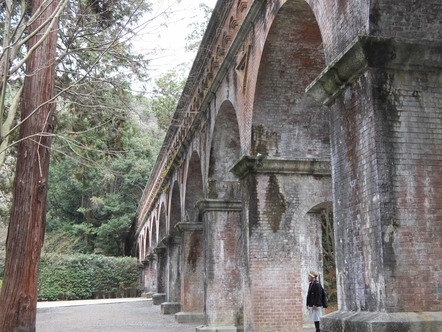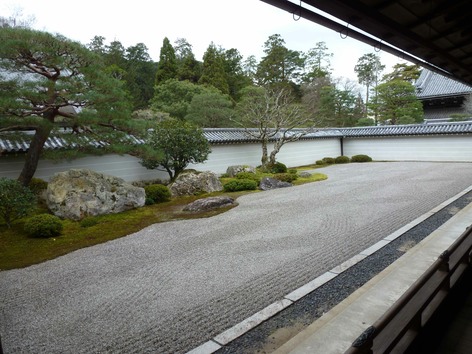It is possible to access the balcony on the gate's upper level, and lake in the same view, but you’ll pay ¥50 to do it. The upper floor also has statues and paintings, but the main attraction seems to be the view. In the end, we ended up deciding to save the money, but if we’re back that way I could be tempted to take a look and evaluate that observation post theory.
 The gate was on our right as we came in, and we diverted from temple-viewing activities to investigate what must be the most recent construction within the temple grounds.
The gate was on our right as we came in, and we diverted from temple-viewing activities to investigate what must be the most recent construction within the temple grounds.
A large brick aqueduct built during the Meiji Period (1868-1912) that is part of the canal system that was constructed to carry water and goods between Kyoto and Lake Biwa in neighbouring Shiga Prefecture.
In other words, it’s a continuation of the canal associated with the Philosopher’s Path.
We could have gone further, on to Nanzen-in, one of Nanzenji's sub temples located on the location of Emperor Kameyama's original villa. With the emperor’s mausoleum, a temple hall and a moss and rock garden it might be worth ¥300 they charge for admission, but we had other fish to fry.

We headed on into the complex, past the Hatto, a lecture hall which is not open to the public, towards the Hojo, the abbot's quarters, where we were only too happy to hand over the ¥500 for admission to the former imperial palace building donated to the temple in 1611.
The building’s chambers are separated by sliding doors (fusuma) with impressive wall panels, but the main attraction is the Zen garden.